Spikes of sunset-colored flowers on 2-foot-tall stalks over narrow, silvery leaves that smell of licorice give this perennial an outsized garden presence. The tubular flowers produce copious quantities of nectar, serving as natural hummingbird feeders.
Native to the mountains of the desert Southwest, threadleaf giant hyssop (
Agastache rupestris) tolerates hot summer days and drought. In fact, it doesn’t do as well if the soil is too rich or wet.
Not in the Southwest? Browse plants native to other regions of the U.S.
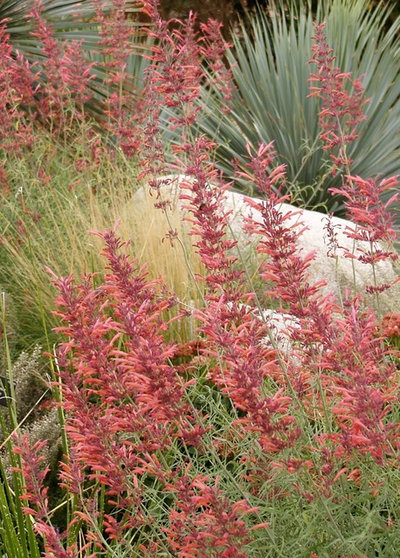
Plant Select®
Botanical name: Agastache rupestrisCommon names: Threadleaf giant hyssop, sunset hyssop, hummingbird mint
Origin: Native to the mountains of the southern Southwest and northern Mexico
Where it will grow: Hardy to minus 15 degrees Fahrenheit or minus 26 degrees Celsius (USDA zones 5 to 10; find your zone)
Water requirement: Drought-tolerant once established
Light requirement: Full sun
Mature size: 2 feet tall and 15 inches wide
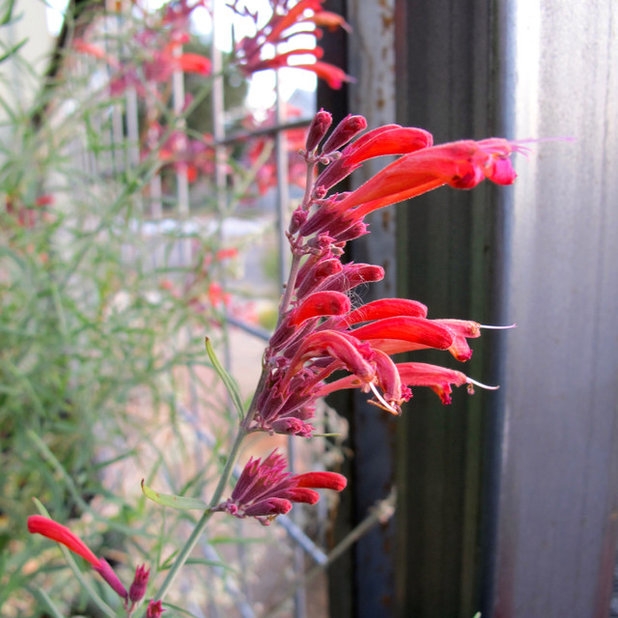
Susan J Tweit
Benefits and tolerances: Extremely drought-tolerant once established; heat-tolerant; prefers well-drained, poor soils; irresistible to hummingbirds; deer browse the sweet buds and flower spikes but generally eschew the fragrant foliage
Seasonal interest: Silver-green foliage with a slight sparkle; sunset-colored flower spikes from summer to the first hard frost; papery seed husks provide interest until the plant dies back to its roots in winter
When to plant: Spring to early summer
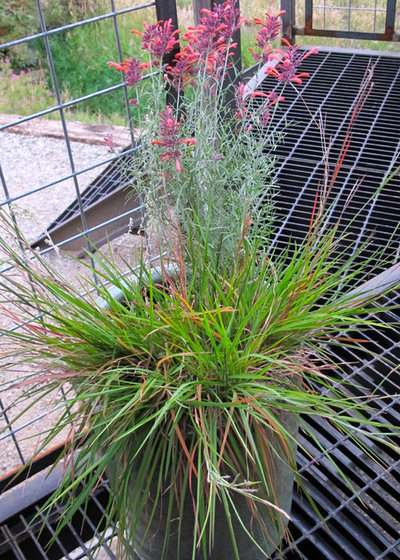
Susan J Tweit
Distinguishing traits. Even before the sunset-colored blossoms open, threadleaf giant hyssop is easily distinguished by its narrow, triangular (lance-shaped), silver-green leaves (hence the common name, threadleaf) and its lavender to mauve buds. The leaves grow on opposite sides of slender, square-shaped stems characteristic of the mint family. As the stems grow, the plant fills out into a bushier but still tidy shape. Crushed foliage has a strong licorice scent. Each flower in the crowded spike of blooms is a narrow inch-long tube shaded from pink to orange.
Threadleaf giant hyssop’s flower display is stunning in the late summer and fall garden, attracting hummingbirds because of the blossoms’ abundant and weeks-long nectar supply. In the West, male rufous hummingbirds will guard patches of these flowers and drive away all other comers, even chattering and diving at humans.
Threadleaf giant hyssop was introduced to the horticulture trade by Plant Select in 1997 after seeds collected by Sallie Walker, an Arizona seed collector, were grown in the rock alpine garden at Denver Botanic Gardens. The plant went from first grow-out to the nursery trade in four years — fast for horticulture — and was an immediate hit.
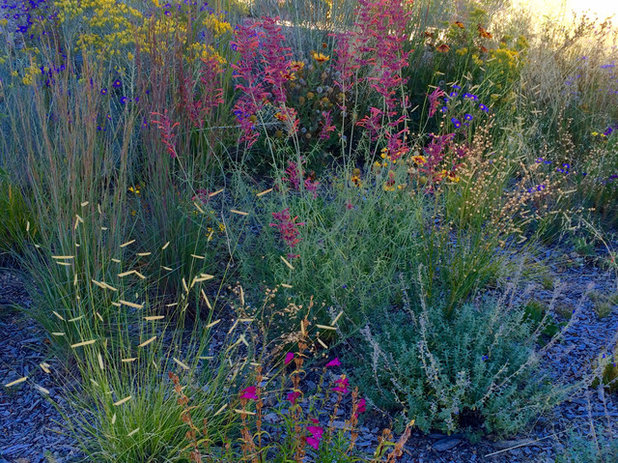
Susan J Tweit
How to use it. Plant in well-drained parts of the garden in clusters of three to five at the midborder. The foliage and shape complement those of yuccas and agave, and their flower stalks give hummingbirds a natural perch.
This plant will thrive in hot and dry hell-strip parkways if given a bit of supplemental water in late spring and early summer. It’s also a star in xeric gardens in dry meadow-stye plantings with mid- to low-height bunch grasses like little bluestem (
Schizachyrium scoparium) and ‘Blonde Ambition’ blue grama (
Bouteloua gracilis ‘Blonde Ambition’). Plant it in containers in hot locations too.
Planting notes. Plant potted plants in late spring or early summer but not in fall, especially in the northern West. The roots grow best in warm, well-drained soil. Do not plant where the soil stays wet in winter, or the roots will rot.
Threadleaf giant hyssop can be multiplied by rooting cuttings of tender stem tips as well. Plant in potting soil in a greenhouse, where the cuttings will stay warm, and water regularly until the roots are established.
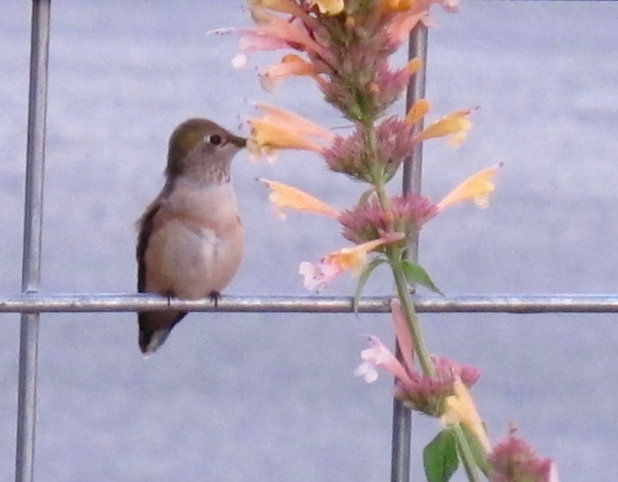
Susan J Tweit
Other species and hybrids:- Texas hummingbird mint (Agastache cana) and its many hybrids are widely available in nurseries. It flowers in dense whorls, usually in a brighter pink or orange than A. rupestris, that smell like bubblegum. Grow it as an annual in cold climates or in wet situations.
- Orange hummingbird mint (A. aurantiaca) has pink flowers that fade to orange, and its leaves are larger than those of A. rupestris. It’s also less drought-tolerant than threadleaf giant hyssop and not freeze-tolerant at all, since it’s native to northern Mexico.
- ‘Apricot Sunrise’ hyssop (A. ‘Apricot Sunrise’), shown here with a perched calliope hummingbird sipping nectar, is one of the many hybrids of the native Agastaches. It has gorgeous deep orange flowers that fade to apricot. It’s best grown as an annual in cold climates.
- Anise hyssop (A. foeniculum) is native to the north-central U.S. and tolerates wetter and colder climates. Its flowers are blue-violet and attractive to bees; the foliage is strongly anise-flavored and used in teas.





